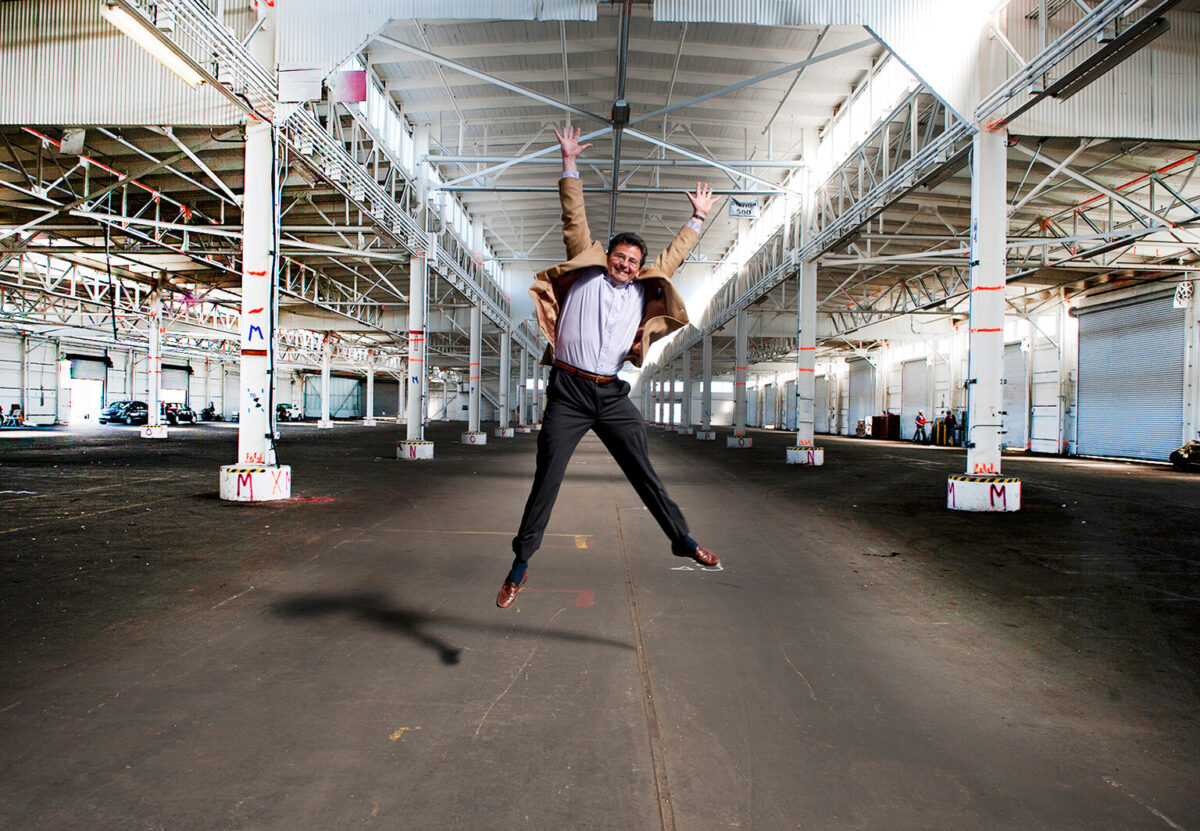Words by Sheri Baer
With a mop of wavy hair and thick rectangular glasses, George Cogan carries on like any kid let loose in San Francisco’s Exploratorium. “Look! You can high-five yourself!” he exclaims, as he demonstrates the optical illusion created by a giant spherically-shaped mirror. Bounding over to a wall of lockers, he taps out a tune on the musically-enabled handles. “If you touch two, you get a different note!” he grins. Next, he’s pressing his arm against a metal shape to reveal a fleeting star-shaped tattoo only discernible by infrared camera: “Cool, right?” In a shadow box exhibit, George kicks up his heels, a flash of light capturing his exuberant silhouette on a phosphorescent screen.
This epicenter of science, art and human perception is Tripadvisor’s No. 1-ranked San Francisco museum, so George’s behavior isn’t unusual. But he’s also not your typical kid. Despite having the zeal of a six-year-old, he’s an accomplished management consultant in his mid-sixties. Although George lives on the Peninsula (Palo Alto, Menlo Park and now a longtime Atherton resident), the Exploratorium is unquestionably his second home. Which is not surprising, given the profound role he’s played in reimagining this world of infinite curiosity.

The Exploratorium’s Origin Story
Understanding George’s contribution requires backing up a bit—to the tale of a different man, with a notable last name: Oppenheimer. In this case, Dr. Frank Oppenheimer. The younger brother of J. Robert Oppenheimer and also a Manhattan Project physicist, Frank could be considered the “uncle” of the atomic bomb. After being barred from scientific pursuits during the McCarthy era, Frank turned to cattle ranching and teaching. Not a fan of rote memorization, he championed a hands-on approach to science education through exploration and experimentation.
In 1969, Frank channeled his passion into the founding of a new kind of museum located in San Francisco’s iconic Palace of Fine Arts. Filling it with an eclectic mix of found, built and donated objects, Frank created many of the Exploratorium’s early exhibits himself. Although ostensibly promoting tinkering, discovery and play, Frank envisioned the Exploratorium as serving a deeper purpose: providing a foundation to fight the misuse of technology. “Frank wasn’t necessarily trying to teach people to be scientists,” George explains, “but to help normal citizens have enough confidence to engage in scientific and technological topics—to ask the questions and question the answers.”
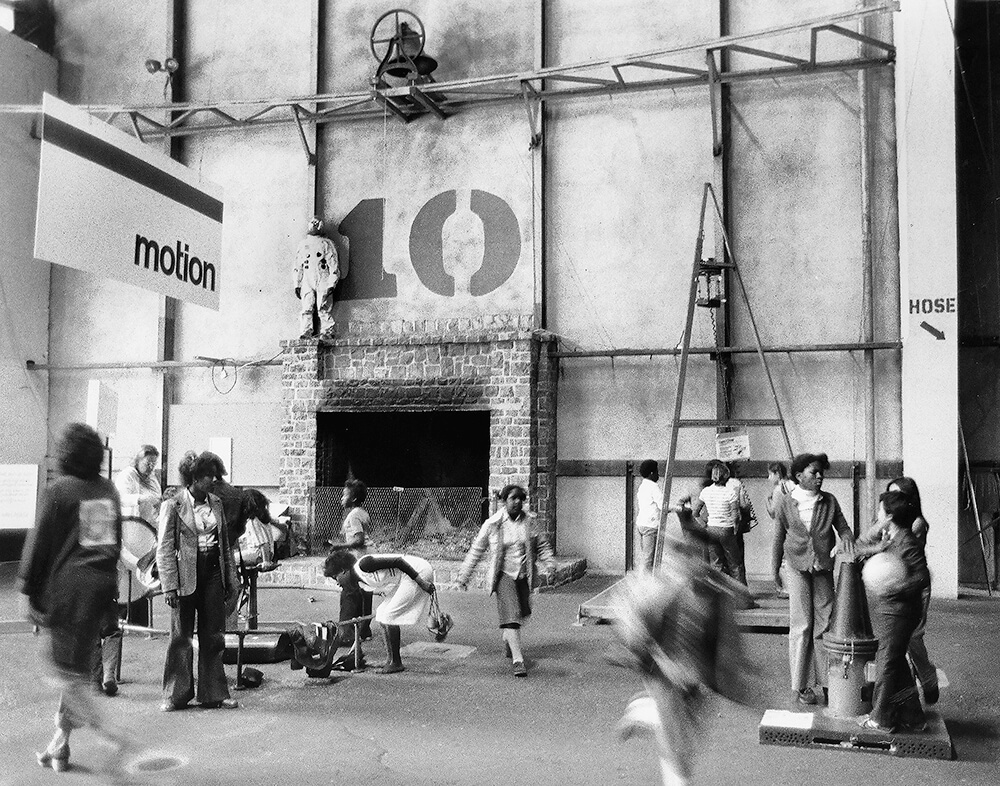
Journey of a Curious Kid
As Frank was launching his groundbreaking museum in San Francisco, George was coming of age on the opposite coast. Growing up in Manhattan, “when it was a safe city in the ’60s,” George describes a free-range childhood, punctuated by subway rides all over New York and collecting Good Humor popsicle sticks so he could build things out of them. “I was the kid who took apart his bicycle and then put it back together, but would always have like three or four parts that were left over,” he smiles. “I wasn’t a great reader, but I was a good visual learner and a good learner with my hands.”
Initially studying economics at Harvard, George took a year off to work in construction, netting enough to spend six months hitchhiking through Europe. When he returned to Harvard, he switched his major to physics, which led to summer work as a research assistant for an engineering professor at Stanford University. After graduation, he moved out to Silicon Valley to join a solar company, then earned a MBA from Stanford’s Graduate School of Business. In 1989, George launched his consulting career with Bain & Company, where he became a partner and opened the firm’s Silicon Valley office.
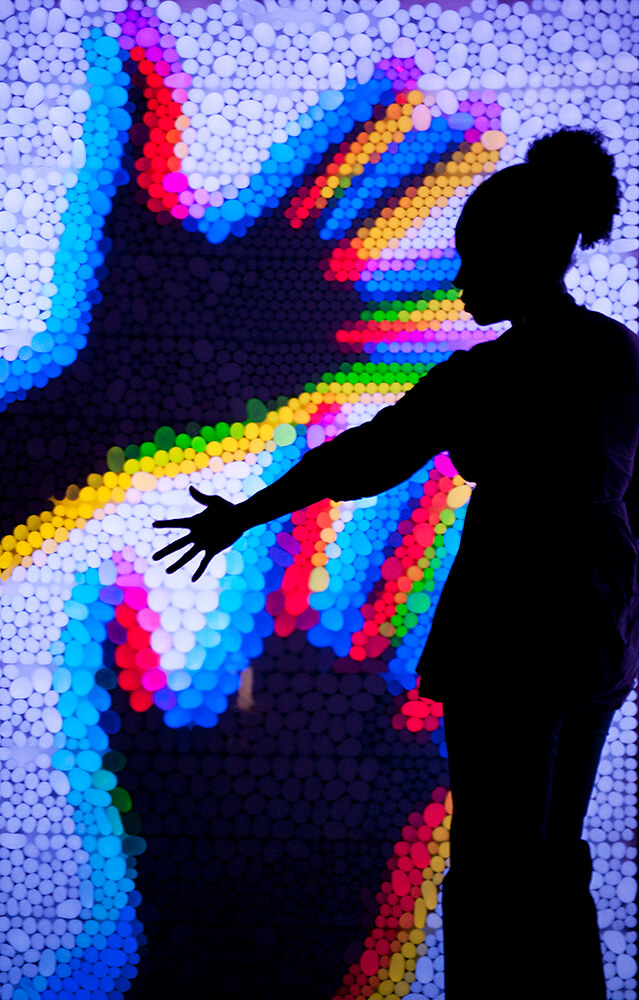
As a Bay Area transplant, George vividly recalls the first time he visited the Exploratorium. “It was a big, hollow, cavernous place—and I just fell in love with it,” he says. “It was a magical place of people experiencing things and learning things, and you could see curiosity in people’s eyes.” Coming from a physics background, he relished experiencing phenomena with his own hands. “Whenever anyone visited, that would be the first place I would take them.”
It was a casual coffee date—or perhaps serendipity—that catapulted George from superfan status to active engagement. His wife, Fannie Allen, met up with a business school friend who mentioned that she was on the board of the Exploratorium. “That’s George’s favorite place!” Fannie remarked. “Well, he should join the board,” her friend responded. “So that’s how I got involved,” George sums up. He officially started in April 1997.
Teaming up with staff and two other board members, George created a strategic plan for the Exploratorium. First and foremost, “We needed more space,” he summarizes. “The founder of the Exploratorium, Frank Oppenheimer, had anticipated that need, but we set the plan in motion.”
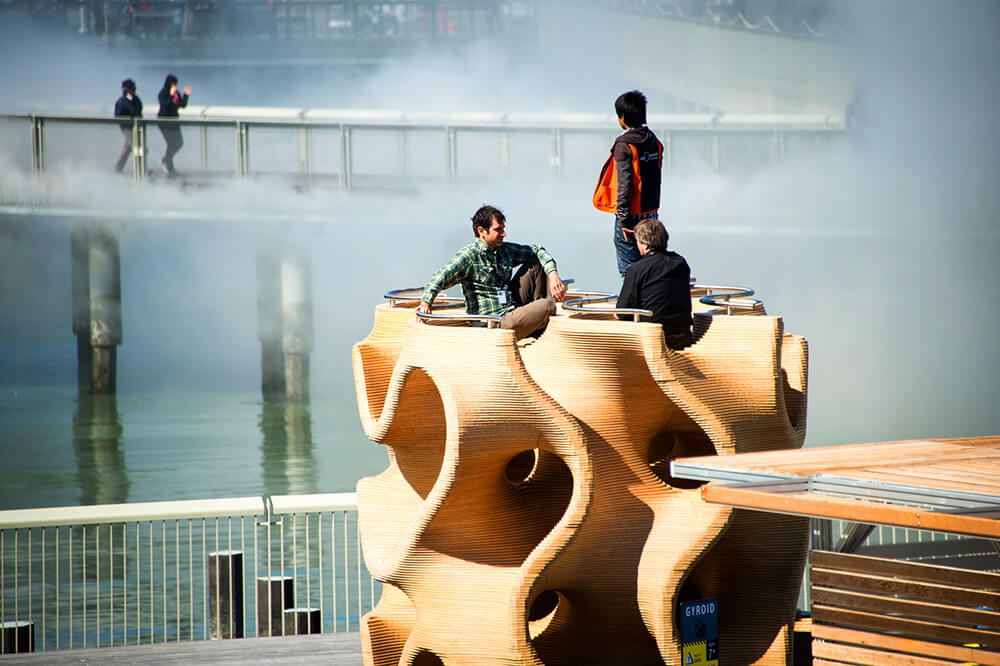
The Big Move
By the numbers, here’s what came next: Ten years searching for a site. Six years securing the entitlements. Two years building the new 330,000-square-foot waterfront campus at San Francisco’s Piers 15 and 17. And, specifically for George, innumerable hours driving the $300 million fundraising campaign to make it happen.
As a board member, George was very familiar with the Exploratorium’s “outsized impact,” ranging from professional development programs for teachers to collaborative R&D projects on a global scale. “It was named the most important science museum to have opened since the mid-20th century,” he proudly attests, “and it’s the model for the new version of science museums all around the world.” But for many, the Exploratorium connoted a favorite field trip destination: the bigger picture view wasn’t widely known. So, George hit the pavement—and gave tours of the construction site—to raise awareness. “We had to educate the philanthropic community about how important the place was,” he recalls.
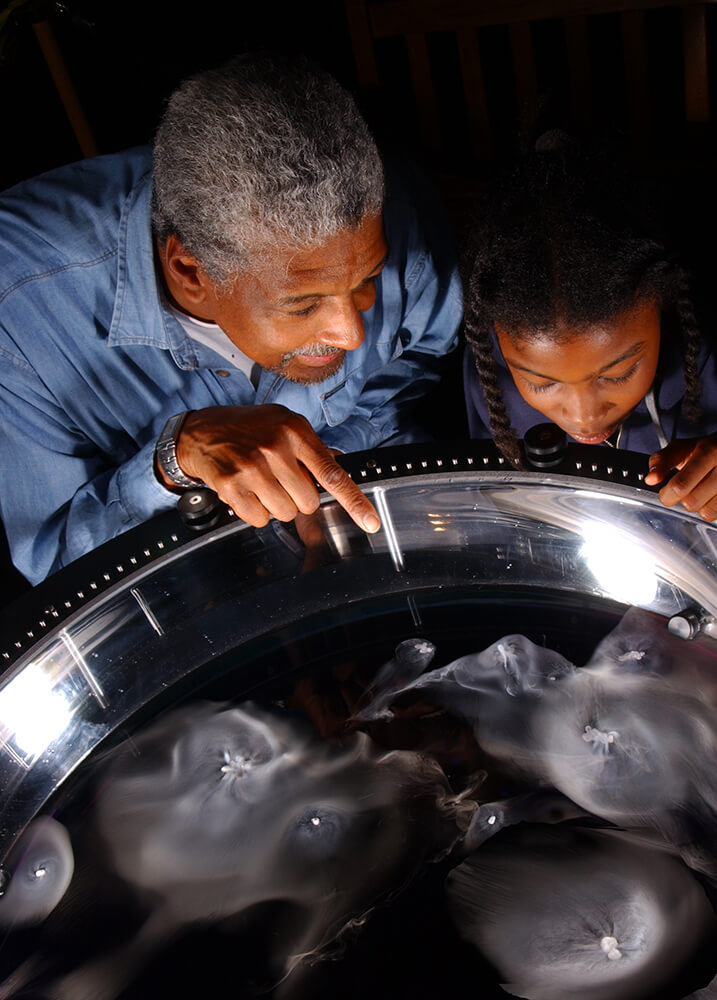
“I came here almost every weekend for five years to show people around.”
Over the course of the momentous project, George became chairman of the board of trustees (2007-2018), while simultaneously leading Bain’s Global Technology Practice and partnering with Fannie to raise their three children. “My kids are the only kids in the Bay Area who would say, ‘We have to go to the Exploratorium again,’” he laughs. George credits numerous Silicon Valley entrepreneurs—including Arthur Rock, Bill Bowes (who preceded George as chairman) and the Exploratorium’s largest donor, Gordon Moore—with anchoring the project’s success. “The role of the Peninsula was super important,” he reflects. “The Exploratorium is one of the few institutions that’s physically located in San Francisco but has a lot of interest and deep ties to Silicon Valley.”
In 2013, 16 years to the month after George joined the board, the new state-of-the-art facility—three times larger than the original—opened to visitors. At the dedication ceremony, George proclaimed to the packed crowd, “Everyone in the Bay Area loves the Exploratorium!” Looking back, he still breaks into a satisfied smile. “It was a fun time to be centrally involved in such an important, iconic institution,” he beams, “and I was doing something that I felt was really important.”
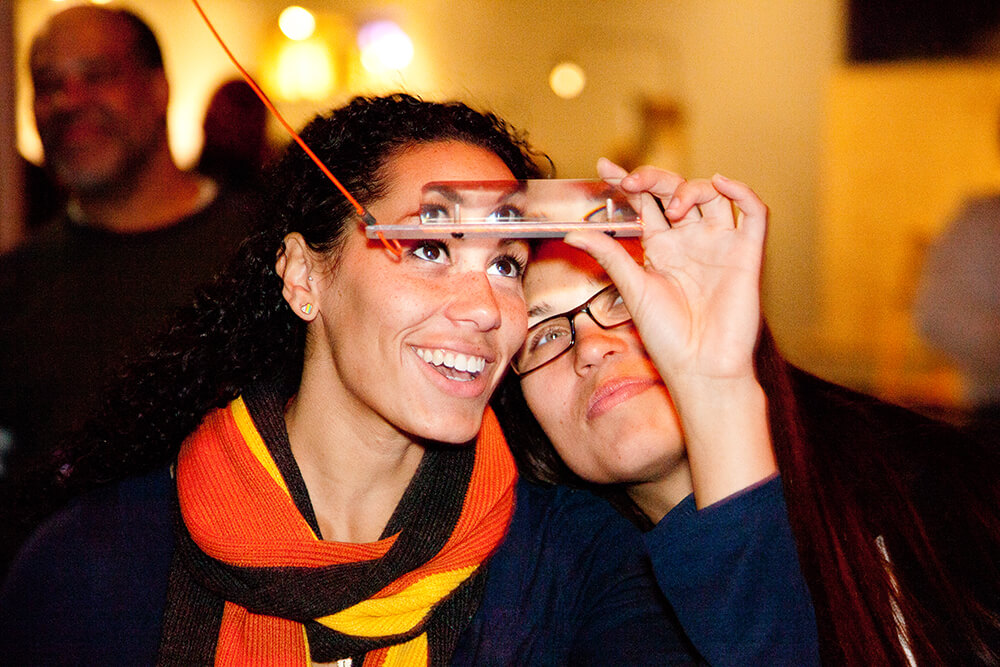
At The Exploratorium With George
Today, the Exploratorium touts 75,000 square feet of roaming space, with an ever-expanding collection of 650+ hands-on exhibits. As for “Don’t Touch” signs? That would be zero. The whole point of coming here is to push, pump, roll, spin, tinker, test, examine and play. Even as the Exploratorium continues to evolve, George keeps marking his own set of milestones. He remains actively involved, whether it’s with his now adult kids, as a partner at Bain or on the Exploratorium’s board of trustees, as chairperson emeritus.
Befittingly, George celebrated his 40th birthday in the old Exploratorium’s Tactile Dome and his 60th in the new one. He harbors a special affinity for the Exploratorium’s largest interactive exhibit, which famously plunges visitors into a sensory journey through total darkness. Although George waved off a formal plaque when he stepped down as chairman in 2018, he agreed to an alternative form of recognition: “You can feel my name in braille at the top of the Tactile Dome!”
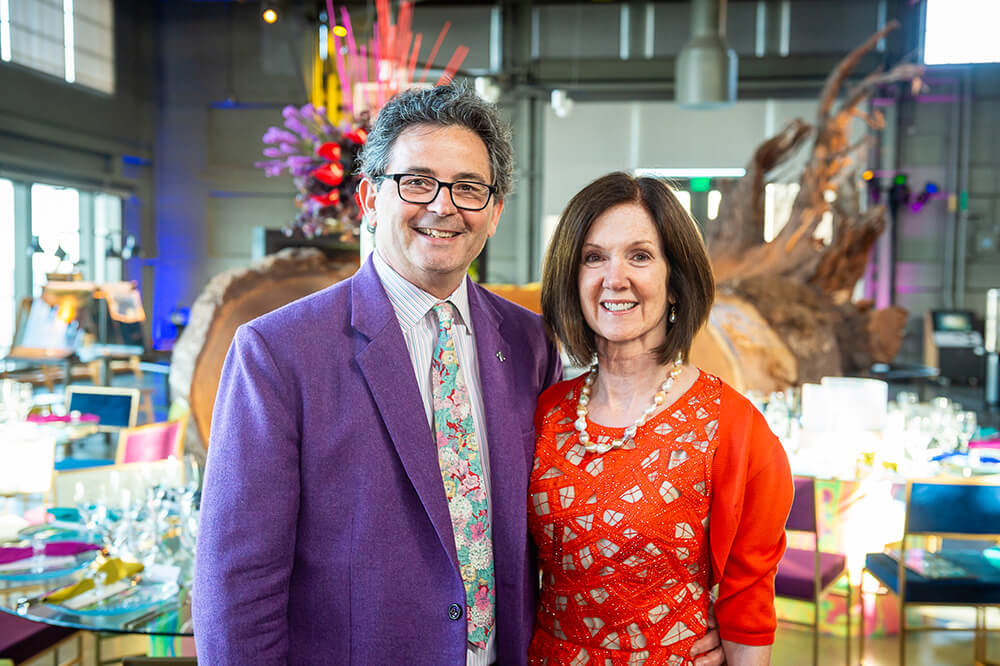
Most Thursday nights, George is a regular at “After Dark,” the special weekly programming that promises: “No kids allowed—but you can still act like one.” And every March 14, you’ll find George whooping it up on Pi Day here, which was invented in 1988 by an Exploratorium staff scientist. “There are very few museums that can lay claim to creating a national holiday,” he asserts. And, even after all these years, it is still George’s No. 1 spot to bring out-of-towners.
What shall it be? Touch a tornado? Capture a wave? Watch water freeze into a colorful kaleidoscope of crystals? If there’s one constant, it’s that every visit is different. And George appreciates that he isn’t alone in his ageless enthusiasm. “I’ve taken Nobel Prize physicists through the Exploratorium,” he says, “and they’re like kids in a playground because everything here is authentic phenomena.”


